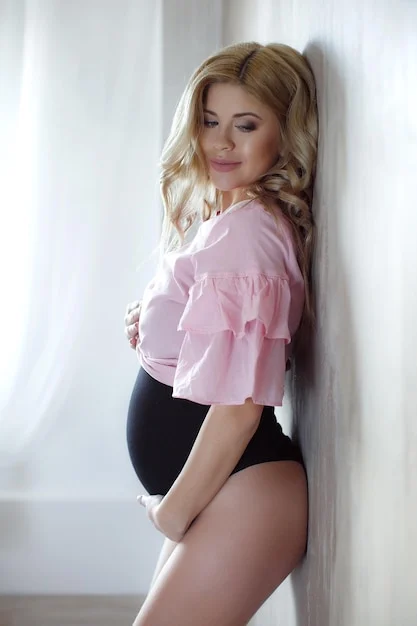“Can you come upstairs and enjoy a movie with Mommy this morning?” I ask, trying to infuse my voice with as much cheerfulness as possible.
“Yes! Can we watch The Grinch? No school today, Mama?” my curious 4-year-old son replies, his eyes wide with anticipation.
I can sense his confusion. “Not right now, sweetheart. Mommy is in too much pain to drive you to school. Would you come upstairs and rest with me instead?”
With a gentle grip, my son reaches out his small, chubby hand to mine. “Yes, Mama. I’ll hold your hand,” he reassures me.
As I shuffle up the stairs, clutching his tiny hand, I struggle to keep my tears at bay. I can put on a brave face, pretending that endometriosis doesn’t affect my life, especially since it’s an invisible illness. There are no outward signs—except for the faint scars on my abdomen that tell tales of past surgeries.
The pain from endometriosis resides deep within, often flaring up during ovulation, PMS, or menstrual cycles. However, it can strike unexpectedly, leaving many women incapacitated for days. It’s not merely “bad cramps”; it’s an overwhelming agony that is exponentially worse. Over-the-counter pain relievers usually provide little relief for those of us who suffer. No one is pretending; this pain is very real.
Endometriosis has interfered with my ability to go to work, run errands, prepare meals, and exercise—each instance frustrating and inconvenient. But the moment I realized I couldn’t take my child to school was a stark wake-up call. Witnessing the impact of my illness on my son’s life is heart-wrenching. I can’t help but feel like a terrible mother, burdened by guilt.
As we ascend the stairs, I feel waves of pain that remind me of labor contractions. Each step is a challenge, and I begin to feel faint. I focus on reaching the top, reminding myself, “Just a bit further.” I turn to my son, “If anything happens, like if I fall or can’t wake up, go outside and find a neighbor to help, okay?” I know the moment he steps outside, our security system will alert emergency services. Either way, he will get help.
The thought of him witnessing me collapse is almost unbearable. What if he sees me unconscious? The idea frightens me to my core.
Once we reach my bed, my son sets up the movie. Relief washes over me as I lie down, removing the risk of a fall in front of him. He snuggles close as I hit play.
He gazes up at me, concern evident in his eyes. “Is it because you’re bleeding again?” he asks innocently. My partner and I have attempted to explain what happens during my cycle, but he clearly hasn’t grasped the entire picture.
“Yes,” I respond softly.
“Will I have to bleed when I’m older too?” he inquires.
“Sort of, but it’ll be different. You won’t have to hurt like Mommy does,” I reply, though that’s not entirely accurate.
Endometriosis occurs when tissue similar to the uterine lining grows outside the uterus, potentially affecting the ovaries and bowels. This condition can cause chronic pelvic pain, severe menstrual symptoms, and even infertility for some women. Research indicates there’s a genetic component; endometriosis can run in families.
While I wish to shield my children from my struggles, I know they are affected by my condition. I can only advocate for awareness and more research so that my daughters and countless other women don’t endure the same debilitating experiences.
My children understand that their mother is not weak, nor are the many other women battling this condition. Celebrities like Lena Dunham and Padma Lakshmi have also bravely shared their stories, showcasing resilience in the face of adversity.
Yet, despite the dialogue among some public figures, many medical professionals remain uninformed or dismissive, often suggesting that women are exaggerating their pain. Imagine a young girl just beginning her menstrual journey, writhing in agony while being told to “toughen up” or that “it’s not that bad.” This is the reality for many, and it’s time we shift the conversation.
We must stand together, sharing experiences, advocating for research, and supporting one another. We need to push for funding towards viable treatment options and ultimately find a cure. Presently, no cure exists for endometriosis.
This March marks Endometriosis Awareness Month. Let’s take this opportunity to support the women and mothers in our lives who are enduring this condition. We can also help future generations by advocating for research to ensure that they don’t have to face the same challenges. There are girls out there who still hold the chance for a happy, healthy life free from endometriosis.
Let’s commit to this cause not just this month but every single day.
For further insights on this topic, you can check out this related blog post here. If you’re considering at-home insemination, take a look at Cryobaby’s home insemination syringe kits for a reputable choice. For detailed information on pregnancy and insemination, refer to this excellent resource.
Summary
This article addresses the emotional and physical challenges of mothering while dealing with endometriosis. It highlights the pain and guilt experienced by mothers affected by this condition and advocates for awareness, research, and support for those suffering. The piece emphasizes the importance of standing together to ensure future generations have a chance at a healthy life.

Leave a Reply